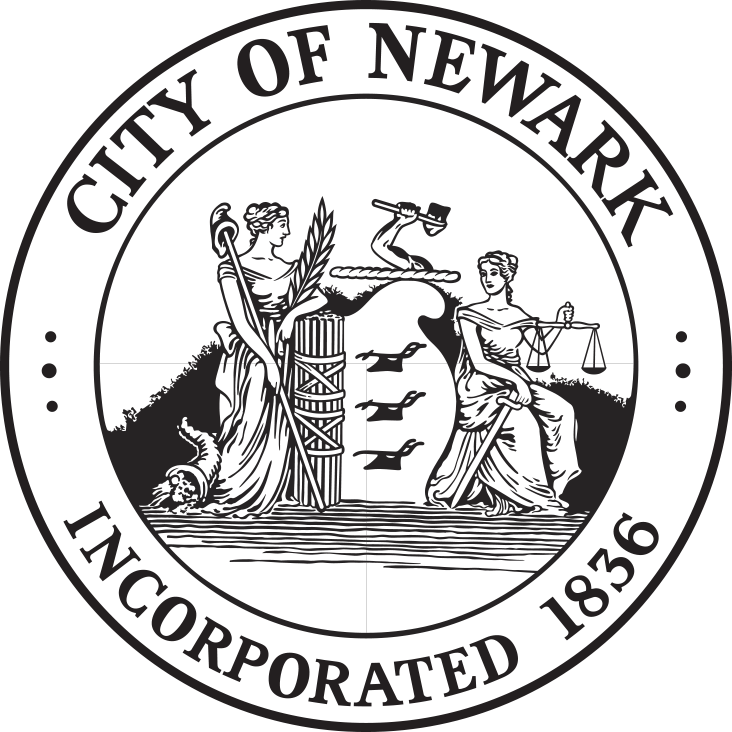Frequently Asked Questions
A CD Study is the first phase for a Federally or State-funded transportation improvement project. Learn more about a CD Study on the Project Overview page. The CD Study will conduct outreach to City officials, project stakeholders, and the public to build project consensus and meet community needs and obtain formal Resolution of Support from City officials. These community outreach efforts will be performed to advance key project milestones listed in the “What is the project schedule?” section below.
This Concept Development (CD) Study will evaluate practical alternatives that will guide future upgrades to the Newark Riverfront Study Area on Broad Street and Center Street, near the NJ Performing Arts Center and Military Park. The roadways will be made safer for all users and more accessible to bicyclists and pedestrians by establishing a connection between Broad Street and newly developed Passaic waterfront area, east of the NJ 21 McCarter Highway intersection with Center Street.
This Concept Development (CD) Study will consider improvements on Park Place / Center Street, from Broad Street to NJ 21, and on Broad Street from Rector Street to Washington Place, referred to as the Military Park Area, or NJ Performing Arts Center Area. The Study will focus on the following intersections:
- Broad Street and Washington Place
- Broad Street and Fulton Street
- Broad Street and Central Avenue (and Park Place)
- Broad Street and Rector Street
- Park Place and Rector Street
- Center Street and Park Place (and Wayne Shorter Way)
- Center Street and Mulberry Street
- Center Street and NJ 21 McCarter Highway
The Concept Development (CD) Study process will involve collaboration between various stakeholders including representatives from NJDOT, the City of Newark, NJTPA, the Newark People’s Assembly, advocacy and community groups, colleges and universities, local schools, emergency service providers, transportation agencies and providers, business districts and local businesses, among others. The Study is also designed to facilitate and encourage public participation from Newark community members. The project establishes a community outreach process to meet with City officials, project stakeholders, and the public to satisfy project goals set forth by the Team, the City, NJDOT, and FHWA (Federal Highway Administration).
With a focus on making the roadways more accessible to bicyclists and pedestrians, this study will create positive impacts to the Newark Riverfront area by enhancing accessibility, increasing mobility, creating economic development, reducing reliance on motor vehicles, and connecting the community.
This study will address the need for safe pedestrian and bicycle access within the project area by prioritizing vulnerable road users and pursuing alternatives to improve safety and mobility. Possible conceptual alternatives may include traffic signal upgrades, intersection and crossing improvements, bicycle lanes, signing and striping improvements, and geometric alternatives with possible alignment modifications.
While this study is focused on pedestrian and bicycle access, it is essential to consider the concerns of drivers as well. Balancing the needs and concerns of all road users is crucial for creating a sustainable transportation network. To do so, we encourage all roadway users to participate in this study through our public meetings, community input survey and WikiMap, and by providing comments and questions to the Project Team through the contact form.
The project is currently in the Concept Development (CD) Phase. The expected schedule is as follows:
- Collect existing conditions information (Winter 2023 to 2024)
- Develop project Purpose & Need (Winter 2023 to 2024)
- Develop and analyze improvements (Alternatives Analysis) (Spring & Summer 2024)
- Present Preferred Alternative recommendation (Autumn & Winter 2024)
The Concept Development (CD) Study establishes goals to minimize construction impacts to residents and local businesses. As for general impacts, the CD Study will establish safer walking, biking, and micro-mobility conditions within the project area, and encourage these active forms of transportation in order to meet broader City goals established by the City Complete Streets Policy and Newark360 Master Plan, among other transportation planning, safety, and mobility initiatives.
The Concept Development (CD) draft report is expected to be delivered at the end of 2024. Based on the Study recommendations, the City of Newark may choose to implement some of the improvements after the Study’s conclusion. For more robust or costly recommended improvements, the next phase of the project then begins in 2025, Preliminary Engineering (PE) and Final Design (FD), which may last two to three years. The Construction phase will follow, which may begin in 2027 or 2028. The duration of Construction will be estimated during the CD Phase, and further refined during PE and FD.
The project is funded through the Federal Highway Administration (FHWA) and New Jersey Department of Transportation (NJDOT).
The City of Newark is leading this study and working with the New Jersey Department of Transportation (NJDOT), FHWA, and the City’s engineering consultant team.
The Project Team recognizes that community participation is an integral part of the CD process, and we encourage the community to follow, participate and help make sure that the project meets the needs of the community. You can be a part of shaping the future of your community.
To stay informed about this study, please:
- Check this website regularly for updated information.
- Attend public outreach meetings. To receive email notifications about upcoming meetings, please fill out the contact form.
- Send comments or questions to the Project Team through the contact form on this website.
Project Progress
- Collect existing conditions information (Winter 2023-2024)
- Develop project Purpose & Need (Winter 2023-2024)
- Develop and analyze Improvements (Alternatives Analysis) (Spring & Summer 2024)
- Present Preferred Alternative Recommendation (Autumn & Winter 2024)
- Community Outreach (ongoing)
Preliminary Engineering (PE) Phase
Expected Timeframe: 2025+
Final Design (FD) Phase
Expected Timeframe: 2026+
Construction
Expected Timeframe: TBD (2027+)
